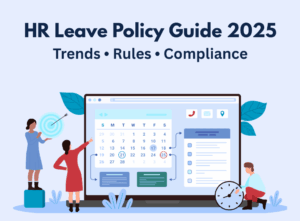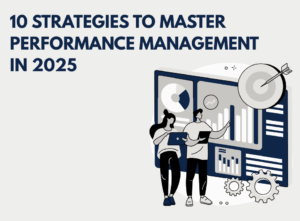Startup Payroll and Compensation Framework
We live in a business environment of innovation and dynamics so fast-evolving that you blink an eye and miss the play. Entrepreneurs, Marketers, Investors, and Technology enthusiasts are always conscious of this churn facing the ecosystem all the time. This environment poses a challenge to adapt to the new paradigm for these participants. This involves creativity and constant thoughtfulness to be relevant in the game.
However, one participant group that is neglected by all and sundry in terms of appreciating their confusion is the management or HR deciding upon the payroll compensation structure in a dynamic setup like a startup.

Imagine an HR head in a company working in the field of Artificial intelligence. It is the year 2018 and the area has just exploded in terms of requirement, hype, and scope. Everyone and their grandma is talking about how their company is going to use this magic wand and change the world. I personally know so many founders who approached my client in the field of recruitment to hire immediately for ML and Python. There was a huge demand and not much supply of really qualified folks. Worse, the area was evolving in its first stages and it was not clear to the founders as to what the desired candidate looked like as per their CV and experience. They were also not certain as to what the scope of the technology would be eventually in the coming years. But they still had to decide.
In that scenario, I wonder how would they come up with the appropriate payroll structure for the employee. Or how many members to hire in the first place. How would they separate the hype from reality and decide what would be an appropriate payroll level? What if they over-compensated for a candidate and had to fire a bunch later because of that? That would bring a bad reputation for the company. Worse still, they continue the candidates who drag the entire setup with them. Also, as a startup, you can’t risk all the capital or a major chunk in salary bets. Frugality is the key as the business model and revenue streams are not as mature. But getting top talent which is high in demand is an uphill challenge and they need some incentive or more to join you and not the other cool team around the corner. Good talented employees have a plethora of options at their disposal always. This can be a cause for attrition levels higher than the average in your industry.
Current Systems For Payroll Decision-making In Corporate
When I worked in corporate a while back, the appraisal cycle was always a treat. You guys know the grind. The management always came with creative explanations for fewer hikes and bonus payments. Payroll was, however, a much-streamlined system there. compared to an SME or a startup. They always quoted an industry leader in Human Capital and Management leader which company gave a comparative scheme of payroll compensation for people in a particular industry vertical and experience level.
They told us, we pay 110% of what was prescribed by Hewitt for this position. They were always being creative in that play for a variety of reasons but the idea was good. If they quoted an industry standard of sorts, we had to sit back and listen. It brought a certain credibility to the talk. Payroll for them had become a science and they could pretend they were doing good by all the employees. Maybe it was true also.
But such an option is not available with the startup HR or even an SME person in a fast-evolving space always. Worse, even if there are agencies affording you this advice, they are not accessible always and the credibility is not clear in every case. The field is ever-evolving and dynamic. There is always a chance to over-compensate or under-pay. Payroll structure is always a conundrum for them. Even if you decide to hire a good candidate, you may need to come up with some creative plays to help them feel they get what the deserve. Then, the CTO or the engineering head needs to be closely associated with the process. They must communicate their points to the HR department as to what is a reasonable pay scale.
Challenges Facing HR In The Startup Payroll Structure
Startups are confusing and dynamic. It is the nature of the beast. Investors lose money all the time in companies that look like promising ideas at some point. Founders shut companies after 5 years of chasing their dreams. Technologies with promise arrive and go and techies get obsolete. Many blockchain enthusiasts from the past years are revisiting the drawing board this year. The web has evolved in the past decade more than in the 2 decades preceding it. Every year, there are new technology frameworks added for developer’s consumption like react.js, angular.js, vue.js, sails, keystone, and Gatsby. All of these are examples of frameworks and libraries only in the Javascript ecosystem. There are a plethora of these in every technology subset. Developers are honing their skills in their chosen field in hopes of making big as the area becomes a prime mover in the space.
But all the time, it evolves in its own way. Many developers who were PHP ninjas in the 2000s had to reinvent themselves as it lost relevance fast. The point here is that it poses a bigger issue for HR in deciding the payroll. The fast-moving market means that sometimes the HR has to act fast and they overpay. The salaries have inflated according to some because of that in the tech space.
Thus, the question of import becomes, “How does the HR in startups determine what is a good range of compensation for their new hires in a relatively new field”. And as the startup world goes, there is no set answer.
This blog space shall try to bring in the studies and industry trends to help you with these issues. Watch this space out for more in the future.
A more technical tool to give you a rough idea is devised by angel.co. The link here gives you a fair spectrum of compensation based on industry vertical, geography, role, and technology. This can be a good first step for basing your research and discussion on. Some other sites like PayScale and Glassdoor also help you arrive at these numbers.
Another issue could be hiring a top executive with a fat paycheck who did not deliver. There are many cases when executives are fired in 6 months after a great deal of pomp and promise accompanied by huge joining bonuses and hefty salaries. The startup may bring in a person from a corporation or a big establishment in hopes that they would close those high-profile sales targets in a hurry. But it turns out a corporate superstar could not deliver without the associated machinery and brand power of the said company. Or a middle-level executive in tech who handled a team of 100 in a services environment was hired to transform a tech setup and better the culture as the team grows. They eventually drag and end up sucking up a lot of money without the returns. Thus, executive hiring is an area HR and the founders need to think through as there is no one-method-fits-all answer for it. It is advisable to consult and take the decision after a prolonged introspection and vetting. The effects and repercussions of bad executive hiring are immense. It is the nature of the beast. You are a company trying to innovate and bring out something no one else has done in the past. Hence, you better think out of the box and not take huge bets in salary payments for publicly hyped (sometimes for valid reasons) executives. We shall continue to bring detailed case studies through this space to bring the attention of the HR to this.
General Guidelines For Payroll Structure In Startups
There are typically 3 heads of compensation in a typical startup. They are Salary, Benefits, and Equity. Typically, in the earlier stages of a company, the salary component is less and the stock options are higher. As the business model matures, the company gets funded or revenues strengthen, the salaries increase and the company has no more the obligation to make up for it through stock options.
The stock options vest over a period of time and are rewarded only if the company goes public generally.
You can also have a compensation structure that rewards performance. That way, both the parties are comfortable to know that the deal is fair. But make sure the KPIs are well structured and defined very elaborately and with realistic goals which have been agreed upon by the parties involved.
Also, top talent is always looking for more development. Hence, training and exposure help acquire them and keep them motivated. Invest in a good cross-functional training program. This helps develop a culture that fosters energetic endeavors and builds trust over time.
For the benefits side, startups may allow pets at the office, have gym facilities, and other facilities like catered lunches or flexible remote-working options.
Hence, it is important for the HR management to define a process in place to determine the salaries of the participants as it is not a straightjacket formula. There always rise scenarios when certain talented employees feel they are compensated lower than what they ought to especially compared to some other peers. That can happen because the negotiations are not standardized. This can cause an issue with morale and it’s a shame to lose a good talented employee just because the startup could not address an issue like comparative salary because there was no research or process in place.
Conclusion for payroll structure in startups
In conclusion, startup payroll structuring is a dynamic and evolving task. There are hardly any rules that need to be sacrosanct in this space. So the best HR personnel and HR heads would do good to research more about the technology hires they ought to make. They can understand the new technology that is slated to be the next winner and manage cost expectations among employees accordingly. Or at least have a conversation going in that direction. There are certain tools available for that purpose as mentioned above in this post that can help you get some direction to decide on a number. But there definitely needs to be an effort to be made to streamline the cash-intensive Technology department, especially with respect to new and emerging technologies.

